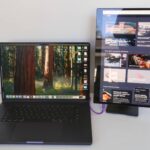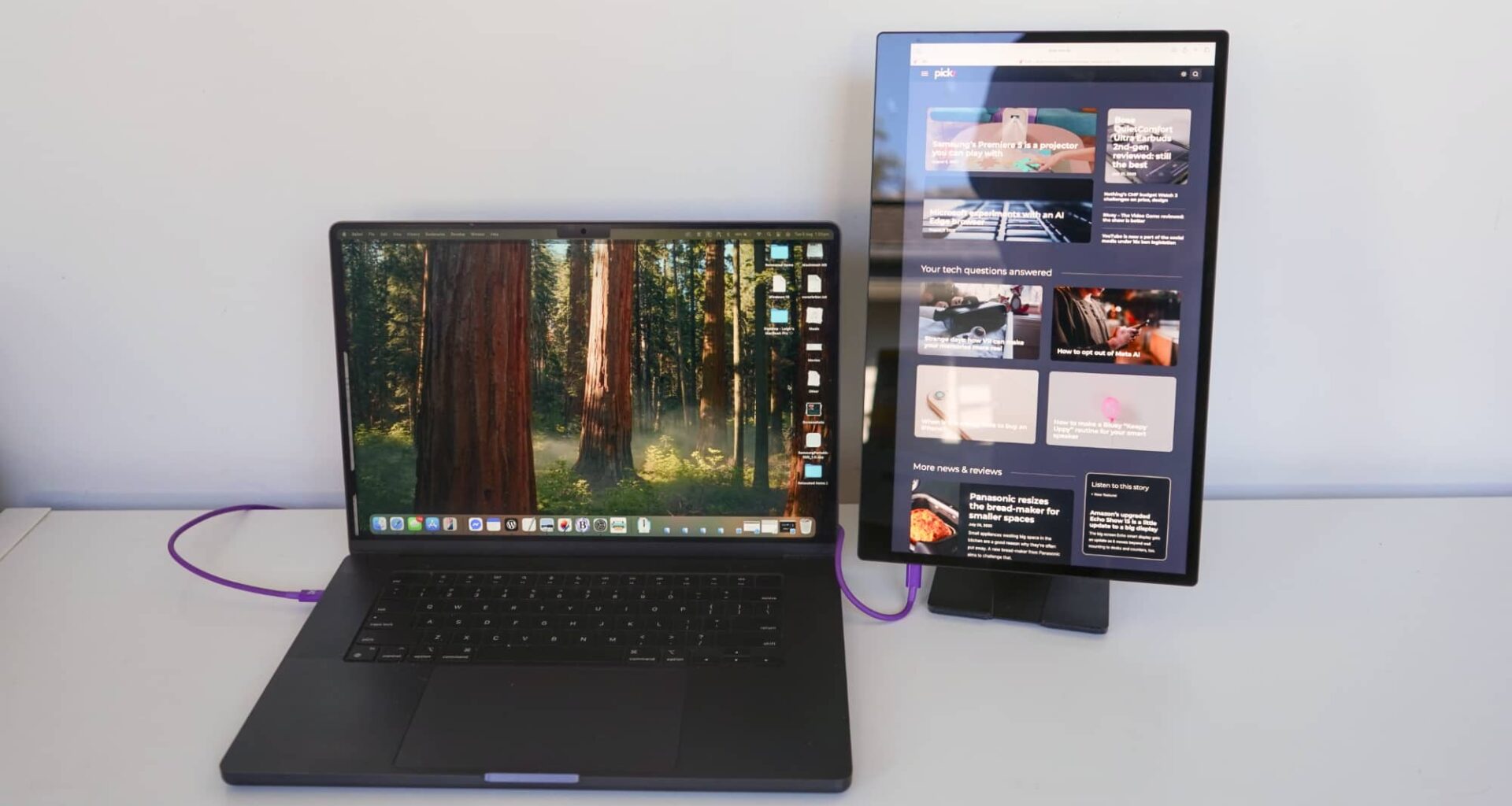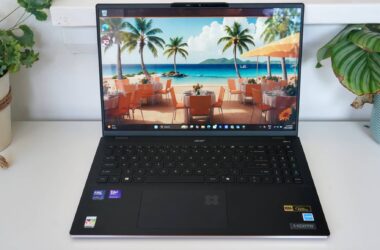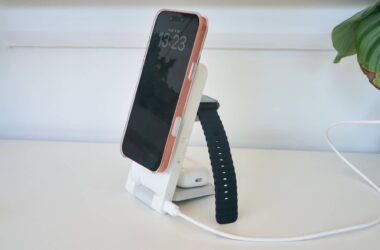Quick review
The good
The not-so-good
Laptop screens are never big enough. But how can you make them bigger and clearer at the same time? Australia’s Espresso has an idea, and the Espresso 15 Pro could be the answer.
Have you ever taken your laptop somewhere and realised you just needed more? More space, more resolution, and potentially more control.
Ever since WFH hit during covid, and more of us have subsequently started going back to work, portable monitors have had some time in the spotlight.
Originally, you needed a monitor to expand the real estate of your home office. You still kind of do, but now that you’re heading back to work, you also need one you can take with you.
Enter the portable monitor, a gadget that gives you a little extra screen real estate in a portable way. Run it at home and take it with you to go; it’s the ultimate in desktop improvement, because it keeps your two screen experience everywhere you need to be.
While most portable screens offer the same Full HD experience, Australia’s Espresso has been trying something different. Armed with its own magnetic stand and a little bit of touch, its “Pro” monitor brings that little bit more to a work from anywhere experience. You just need to spend more to get it.
What is the Espresso 15 Pro?
The name might draw visions of a cup of coffee, but a smooth cup is hardly representative of this gadget. No, this is a monitor, and a rather neat one, at that.
It’s actually the second of Espresso’s monitors we’re checking out, a company famed specifically for monitors. No extra major peripherals like other companies. Just monitors.

In the 15 Pro, Espresso has built a totally portable 15 inch widescreen touch-based display, encased in glass and aluminium, and compatible with its magnetic Stand+ system.
For those playing along at home, Espresso’s Stand+ is a clever little compact stand that uses magnets and a folding base to let you quickly and easily set up your screen either to the side of your computer, or even above. It means you don’t need to carry a more complex stand or even mount the portable screen to the back of your computer the way you would with some other portable displays.
It’s a little more customisable: put your screen anywhere on your desk, provided it’s within a cable’s reach to your laptop. Standard monitor landscape or rotate to be portable, it’s really your choice, with a 4K res waiting for you in either.
What does it do?

Like other monitors, the Espresso 15 Pro provides a little more screen real estate when you desperately need it, such as when you’re on the road and need a little more space to work than your 13 or 15 inch lappy will provide.
And sure, you could bundle in a large monitor and make life awkward as you travel, but who wants that?
Espresso’s flavour of screen is a 15.6 inch boasting 4K’s 3840×2160 with a maximum of 60Hz, making it not far from the 5K Apple Studio Display, but the same speed (60Hz).
It’s relatively bright at 550nits, and supports two USB-C ports. One of those will always be for the charge and data from the laptop (or another supported gadget), but it means the second is an extra USB port for your uses. Charging your phone, headphones, that sort of thing.
Encased in aluminium and glass, the Espresso 15 Pro weighs a little under a kilogram, hitting the scales at 800 grams, but feeling staggeringly well built. It’s not much thicker than its non-touch variety, either, with the Espresso 15 non-touch model we checked out earlier at 5.3mm, while this touch-enabled Pro edition a little under double the thickness at 9mm.
You’ll find built-in speakers for the Espresso 15 Pro, but don’t expect them to be game changing in a screen this size. Those headphones you might keep plugged in on the extra USB-C port will probably do a better job, because the speakers are actually worse than the tiny ones the Mac Studio comes with. Plus you came for the screen.
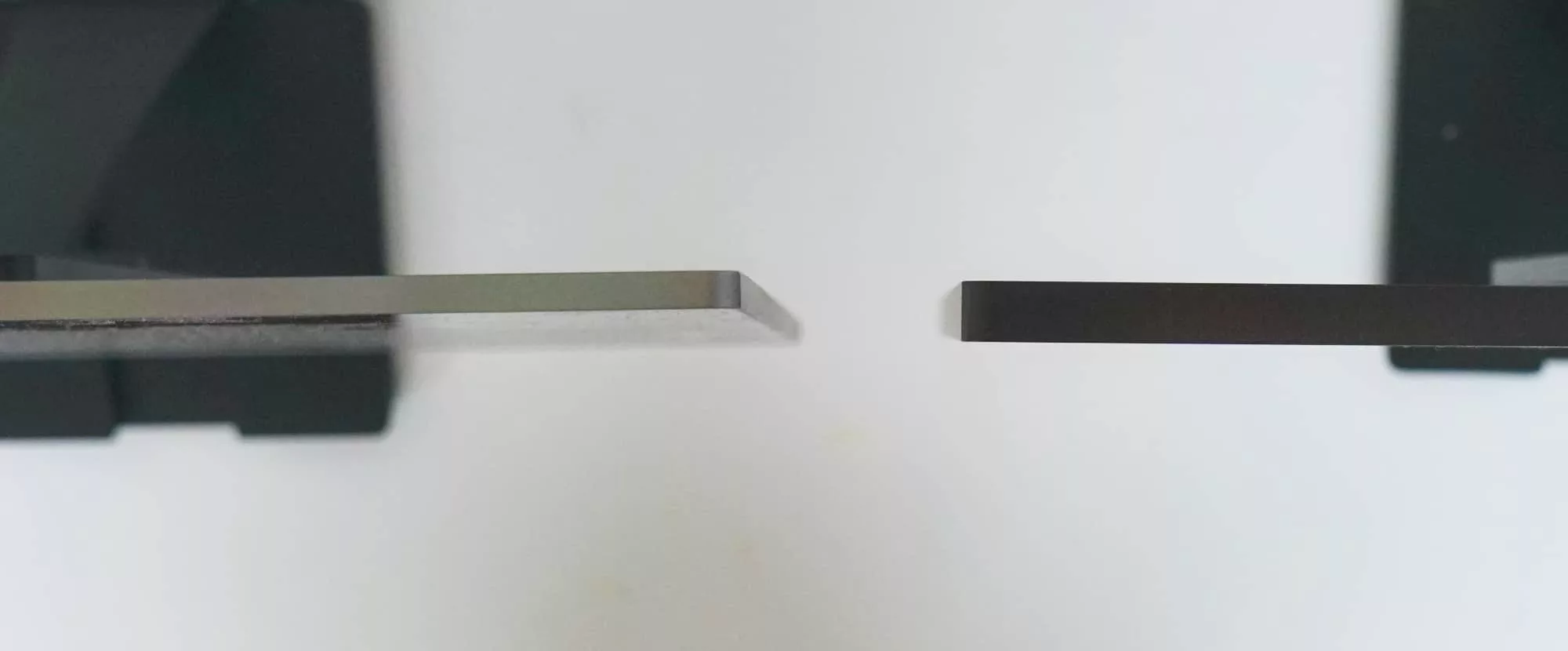
Does it do the job?
To use the Espresso 15 Pro, the company has made things really easy: set up the included magnetic stand and plug the monitor in.
You get a purple USB-C cable to do it, but the reality of Espresso’s monitors is that USB-C works with largely any USB-C cable, so even if you lose the purple cable, you probably have another black or white or orange cable that’ll do the job, too. It needs to be a decent cable — many USB-C cables won’t drive the Espresso screen — but it’s not just Espresso’s purple cable that makes it work.
That’s it, though: plug it in and all of a sudden, you’ll find a 15 inch touchpad with a screen behind it is attached to your computer. It’s so easy.
From there, you can set your extra screen up to work with your laptop, orienting the display, and if you want, using Espresso’s software “Flow”, which provides a little bit of workspace management and a way to make mouse transitions a little clearer going from one screen to the other. You can also do this without Flow, but the app is designed to make life a little easier.
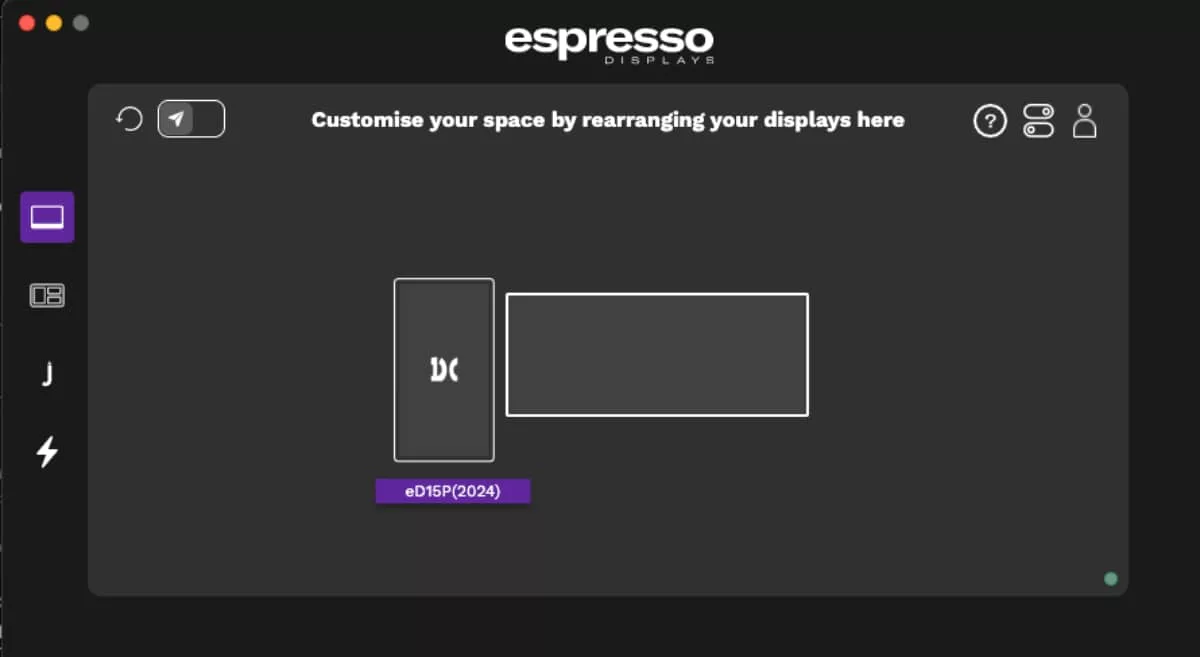
While Flow is handy, the stand is one of the features we absolutely love, just like we did on the previous generation. It’s one of considerations that helps to make Espresso’s screens truly portable.
You can grab one of the office and one for home, and then just mount the screen when you need it. You get one in the box and can buy others if you need them, making screen portability clever and easy.
Plus it’s a strong neodymium magnet, so if you need it to hold your magnetic phone at times, that should be possible, too.
It’s a great screen that feels as good as it looks. Portable monitors don’t get more professional than this.

What does it need?
But like other Espresso models, the package can feel a little barebones.
The screen comes in the box, as does a cable, but there’s no case, nor is there a stylus. These are all optional extras, even if they feel like necessary counterparts all the same.
You’ll want the case to protect the screen, because while it feels sturdy, we’re also not sure if the slightly thicker aluminium and glass combo it’s made from will survive a large laptop-laden bit of luggage as well as you might think. Press that screen up against the 16 inch MacBook Pro juggernaut we regularly carry, and we’re a little concerned how worse for wear the Espresso will look by the end.
And that stylus feels like a necessity if only because not every operating system has been made with touch in mind. You might have always yearned for a Mac with a touchscreen, but the experience isn’t like using an iPad.
Touching icons on the screen never feel quite as satisfying as they should, and you may need to touch that “close window” X icon a little more than once to actually exit a program.
It’s not the fault of macOS, or any operating system, for that matter: they haven’t been designed for touch, so they’re not going to make the targets finger sized. Rather, you may need to make the screen resolution appropriately sized.
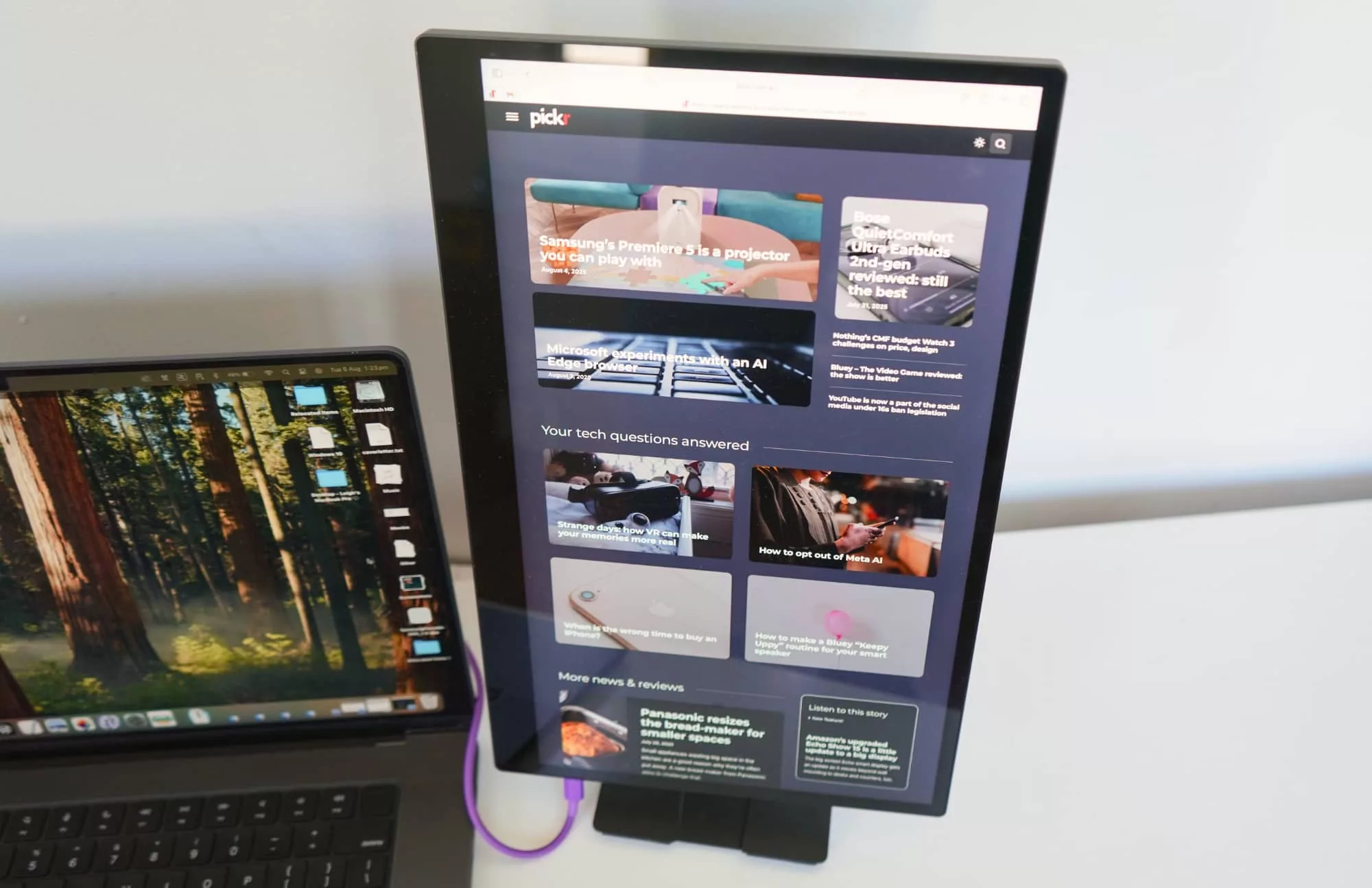
Interestingly, Espresso’s Flow software doesn’t actually improve this, despite being something you can add to your computer. It feels as though it should help you define the size of hit targets, but that’s not really what we found. Flow helps with management, but still needs a little more refinement where it counts.
And that includes brightness control, because there isn’t any we could find. At least not without the Flow app.
Let’s not mince words: the 550nits Espresso 15 Pro is brighter than your laptop might offer, giving you a lot of light to work with. That’s great. However, unlike your laptop, it won’t automatically calibrate its brightness to match your environment. That’s a problem because it means your screen will sometimes be brighter than you need, potentially searing your eyes as you use it.
Not wanting to shine a Goldilocks onto the situation, this screen can be too bright, as oppose to just right. We’d love the latter, but there aren’t any controls to help get us there.
You can fix it by using the Espresso Flow app, but physical controls (or even an on-brand touch controller) would have been appreciated. Not every operating system can use Espresso Flow, and you shouldn’t have to install an app to control the brightness of a monitor. That’s a fairly new one for this reviewer.
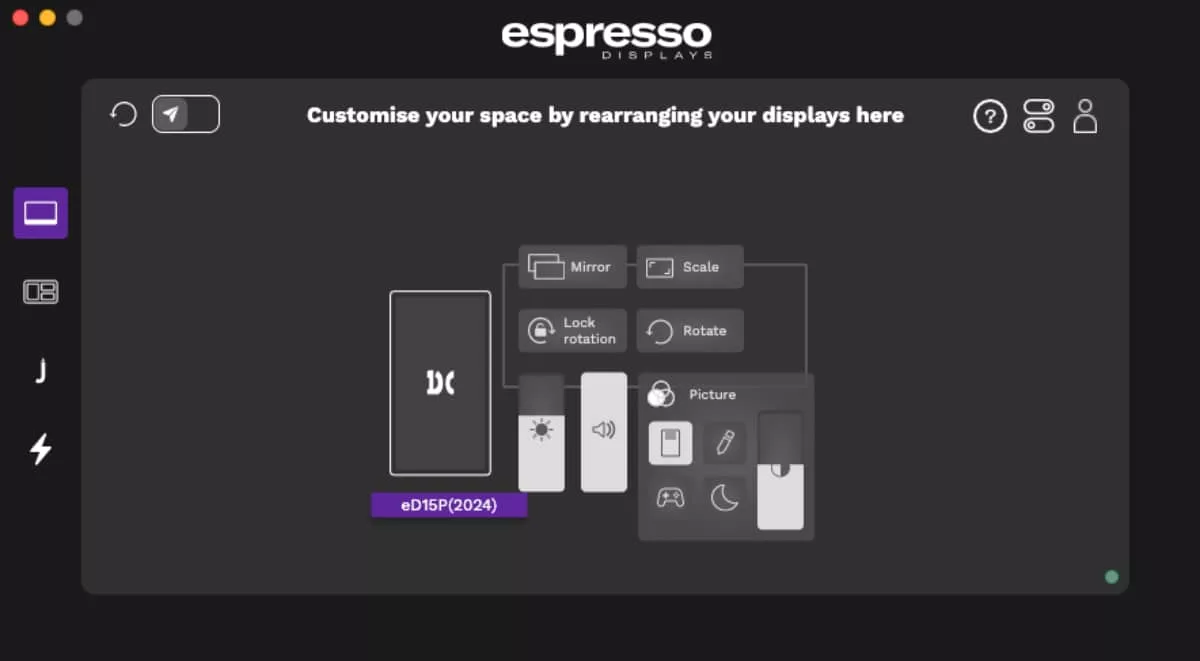
Is it worth your money?
While these are all interesting issues, the one you might take the biggest concern with is the price: at $1099 in Australia, the Espresso 15 Pro is a pricey portable monitor, particularly if you have no reason to add touch.
Part of why the 15 Pro is so expensive could come down to size: 15 inch 4K monitors aren’t easy to find. Most of the desk-bound external monitors that are 4K start around the 23 to 27 inch mark and priced between $150 and $400. This is much, much smaller.
Unlike those models and by comparison, the Espresso 15 Pro is actually portable.
There are other 15 inch 4K monitors, but they’re either priced like the Espresso, or off-market random brands with lower price tags and less useful designs. And whether you actually get a 4K resolution at a usable refresh could be a case for buyer beware.
So the price is high because 4K and touch are a pricey combination, as is the use of 1.06 billion colours, making it a 10-bit panel. This is a portable screen made for creatives, and folks who want the best. By comparison, portable Full HD panels tend to be less expensive, such as Espresso’s own or even the Dell P1425 we reviewed recently.
The problem is that extra feature of “touch” is largely extra. Simply put, you may not use it.
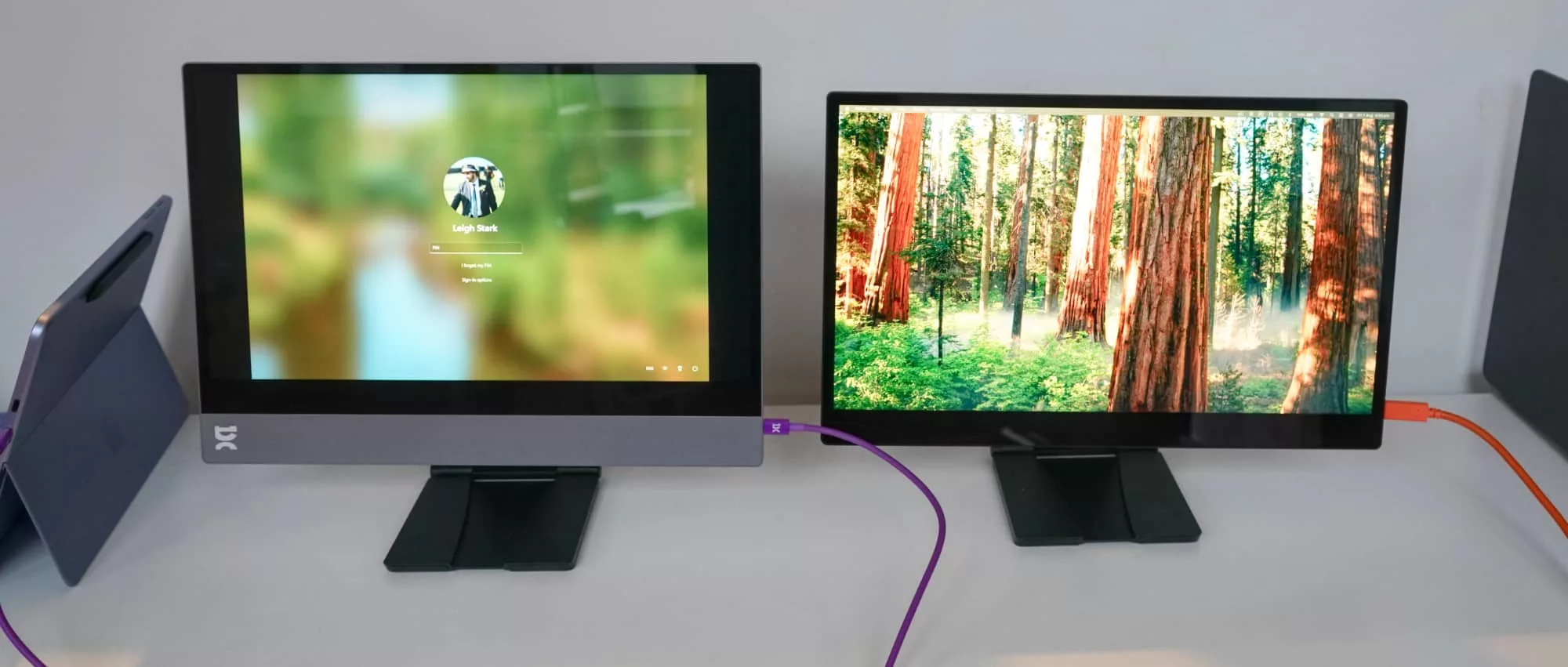
The more we used the Espresso 15 Pro, the more we didn’t touch the screen. Not because we couldn’t, but more because the lack of touch on Mac made it a little more cumbersome, and no stylus was included in the box.
We stuck the monitor on the side of our ultra-wide where it became a handy vertical screen, and when we’re working out and about, or even just on a table on the verandah, it’s a second screen to go.
But touch, it’s not that useful without a stylus on this screen.
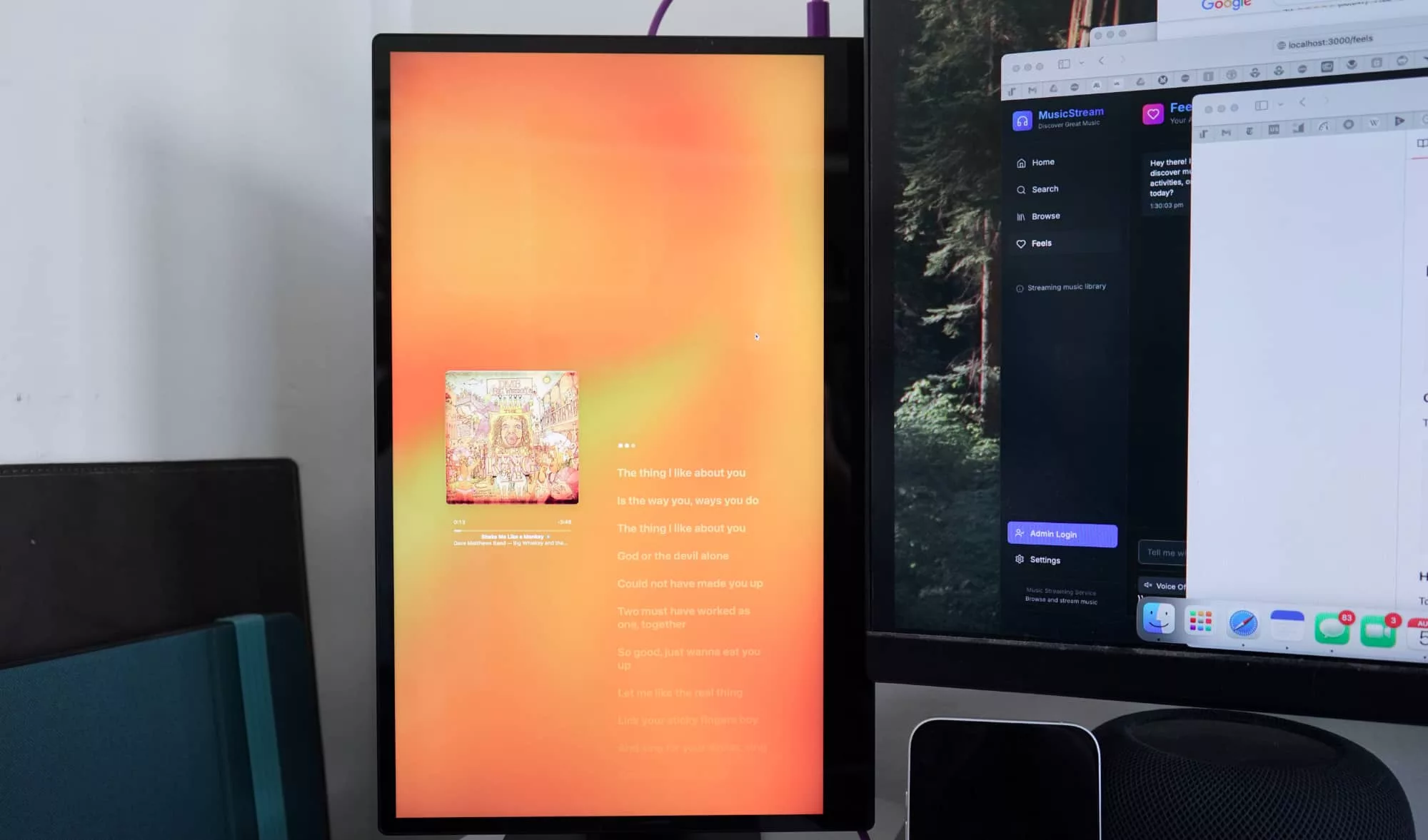
A stylus should be included here, if only to make touch on desktop operating systems better. Espresso could always make an optional better stylus with button controls, and sell that as an extra, but an included one in the box would help you make the case that touch on the 15 Pro is useful, rather than just — as Mac’s notification message basically puts it — a new trackpad added to the screen.
Touch on Mac in this way isn’t super useful. It’s a marginally better experience on Windows, but that could be because companies still make touchscreen PCs. At least the operating system is primed for it in parts.
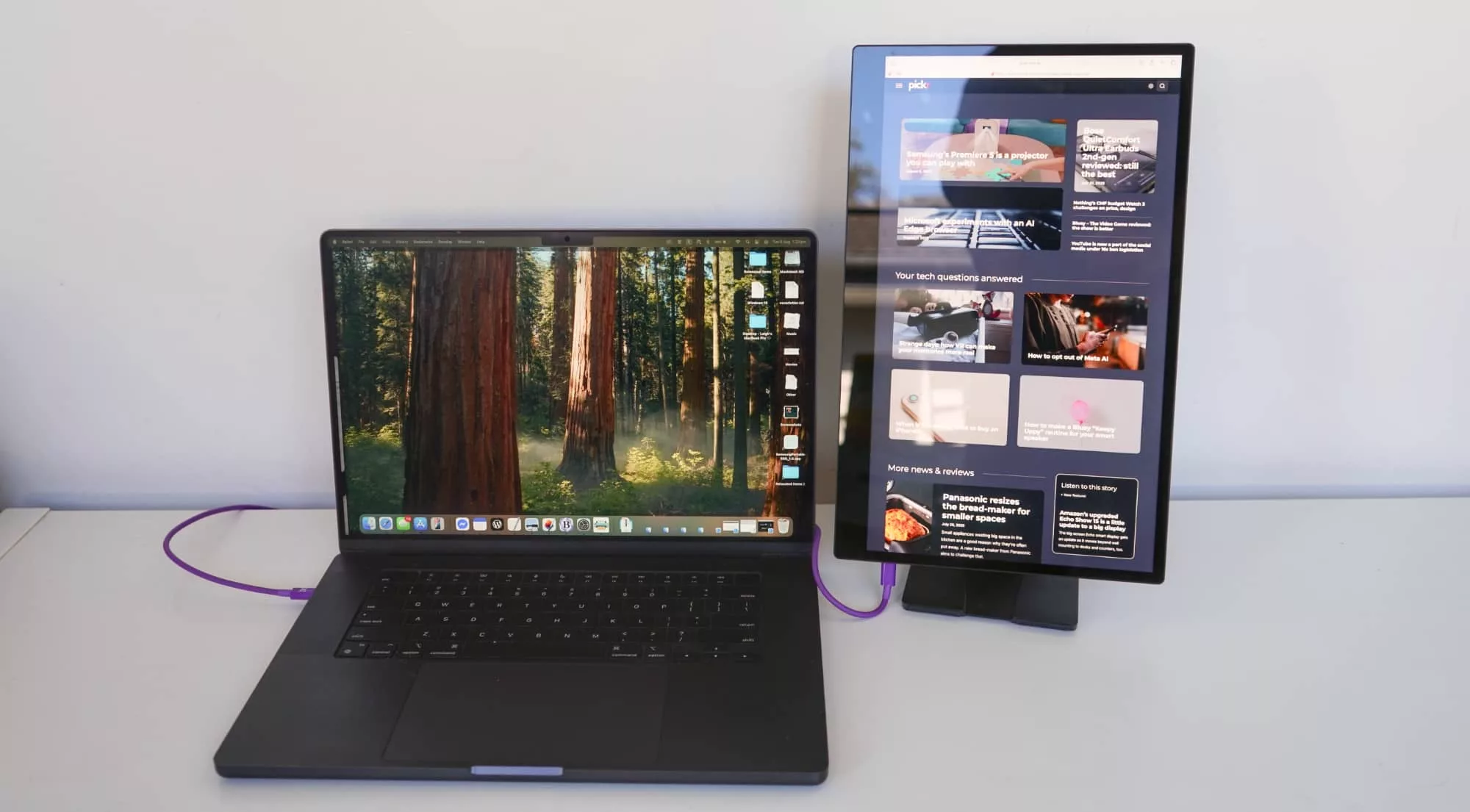
Yay or nay?
Without the touch, the best reasons to consider the Espresso 15 Pro is for portability and clarity. This screen is sharp and capable, possibly like no other.
Yes, it’s pricey, but the best gear often is, and the Espresso 15 Pro qualifies. There’s also a pricier 17 inch variation on the theme, a 4K 17 inch touchscreen set in aluminium and hardened glass designed to be mounted to one of Espresso’s magnetic stands, but at $1250, it’s probably not a consideration for most, not to mention bigger and more awkward to carry, weighing 1.1kg at that.
Frankly, we wish there was a 13 inch Espresso Pro, which would nail the sweet spot for folks with the veritable sweet spot of portable computers: 13 to 14 inches. There’s an Espresso 13 inch Full HD touch model, but nothing with quite the res of its 4K Pro siblings. Now that would be something.
Right now, if you’re looking for a portable screen that delivers a premium feeling, you can’t go better than the Espresso 15 Pro. It’s just that little bit more capable than just about every other portable monitor around. Recommended.
